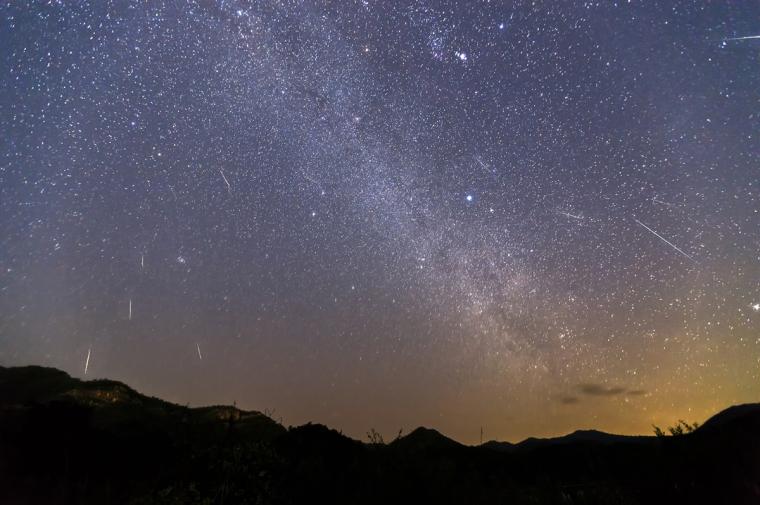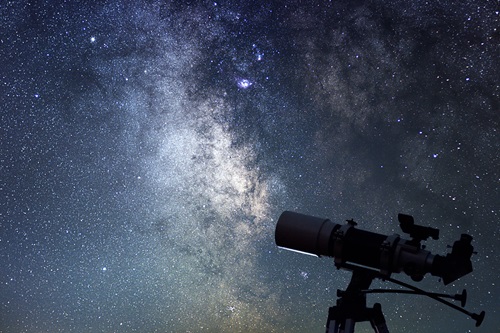
The Perseid Meteor Shower in August will be one of the reasons to visit the Oregon Outback this year. The area was recently certified as the world's largest international dark sky sanctuary.
We’ve all heard of wildlife sanctuaries but a dark sky sanctuary might be a new concept for more than a few people. Oregon recently grabbed headlines as having the world’s largest international dark sky sanctuary, defined as an area where the night sky is almost perfectly dark, allowing dazzling viewing of stars, constellations, meteors and more.
And it’s not just a tourism claim; the certification comes from Dark Sky International, the organization that promotes restoration of the nighttime environment, and educates communities about the detrimental effects of light pollution. The group has certified more than 200 Dark Sky Places in 22 countries. (A full list of Dark Sky Parks in the USA can be found here.)
The certification effort for Oregon is the latest result in a years-long effort led by federal, state, and local officials, community members and several legal jurisdictions. Public officials and a variety of other stakeholders participated in night sky monitoring, lighting inventories, lighting improvements (it was instrumental in decommissioning 14 lights and retrofitting 60 lights on public and private land) and using public outreach to bring the nomination together.
According to the Stateman Journal, the 2.5 million acres in Lake County, east of Klamath Falls and just outside Lakeview, is now the official largest dark sky sanctuary in the world.
(And that’s just the section that has been certified so far. When completed, the full Oregon Outback International Dark Sky Sanctuary (OOIDSS) will encompass over 11.4 million acres of voluntarily protected night skies, according to Good News Network.)
It is not easy to become a Dark Sky Sanctuary but the Oregon Outback has all the right ingredients. The lack of population centers, combined with a commitment to using “good light,” helped the area achieve a pristine darkness that officials hope will spark a type of low-impact tourism centered on enjoying the sky without major development.
 Smithsonian Magazine notes, “The newly certified area is called the Oregon Outback International Dark Sky Sanctuary, and officials spent four years working to earn the designation. They’ve implemented a lighting management plan that will help preserve the region’s unobstructed night sky views, which includes measures such as installing motion detectors and reducing the number of lights that point upward.”
Smithsonian Magazine notes, “The newly certified area is called the Oregon Outback International Dark Sky Sanctuary, and officials spent four years working to earn the designation. They’ve implemented a lighting management plan that will help preserve the region’s unobstructed night sky views, which includes measures such as installing motion detectors and reducing the number of lights that point upward.”
And stargazing, say tourism professionals, is almost overwhelming.
“It’s surprising sometimes to see that many stars all at once,” Bob Hackett, executive director of Travel Southern Oregon, told the Guardian’s Dani Anguiano. “It catches you, and it makes you pause because you feel like you can touch it … That vastness of the whole cosmos up there — it almost makes you get closer to the people you’re with on the ground.”
2024 will bring an enormous number of nighttime celestial events, and Oregon’s Dark Sky stands to benefit from many of them, including:
- April 16 to April 25: Lyrids meteor shower
- April 15 to May 27: Eta Aquarid meteor shower
- August 11 to August 13: Perseid meteor shower
- September 18: Partial lunar eclipse
- October 12 to October 19: Comet Tsuchinshan-ATLAS passes close to Earth
- September 26 to November 22: Orionid meteor shower
- December 4 to December 17: The Geminid meteor shower
Full information on all these events can be found here.
The tourism efforts are already on. Oregon is offering Star Parties, free meetups for everyone from casual stargazers to seasoned astronomers. The scheduled viewings will be held at both Rooster Rock State Park and Stub Stewart State Park on the same nights. (The Oregon Museum of Science and Industry also expects to host an event around the partial solar eclipse on April 8 at 11:25 a.m.)
Expect outdoor tourism to be even more popular in the Oregon Outback, an area already known for its opportunities for hiking, biking and birdwatching, along with fishing and hunting, with accommodations including small cabins, lodges and hot spring resorts. But it’s not exactly a tourism-heavy area.
Good News Network notes that the area “is situated in the northern extent of the Basin and Range Province of the Western United States. It’s sparsely populated, very remote and primarily comprised of public lands.” (Also important to know: connectivity may be limited at best and the ability to see stars is entirely weather-dependent.)

